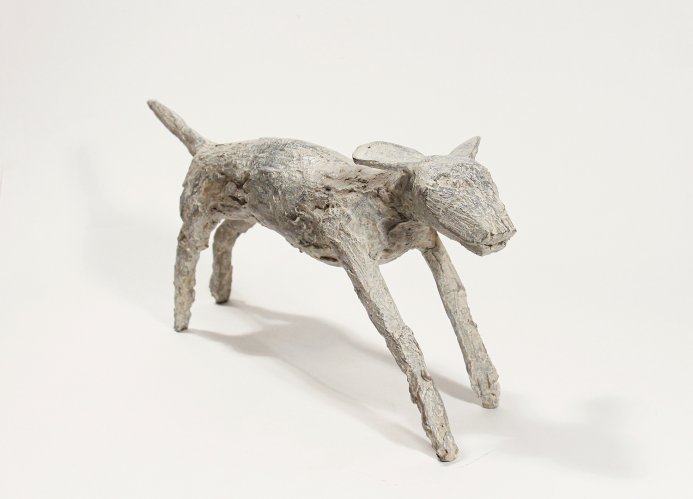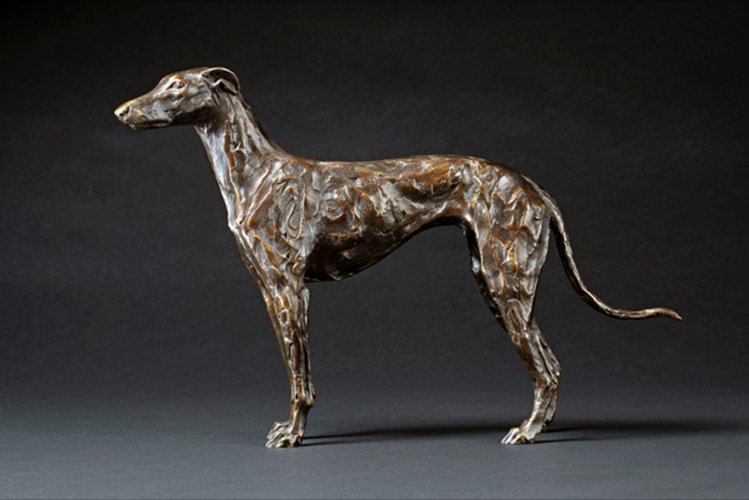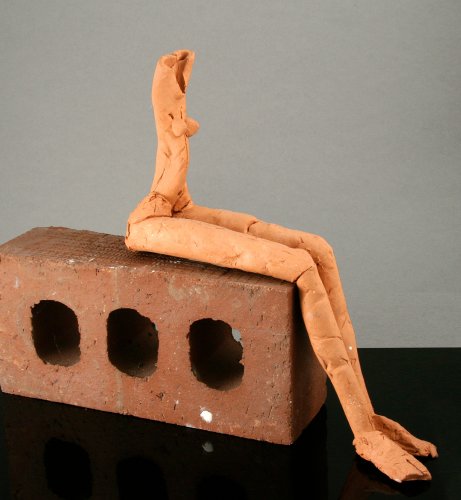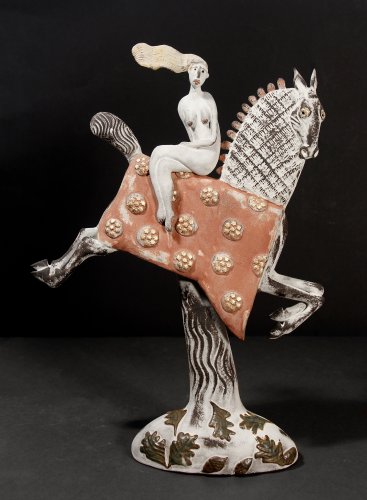Sculpture is three-dimensional artwork created using a wide variety of materials, usually stone (rock or marble), metal or wood.
Some sculptures are carved; others are assembled, built up and fired, welded, moulded or cast.
In this section:
- Bronze
- Bronze Resin
- Ceramic
- Copper
- Iron Resin
- Papier mache (Sculpture)
- Plaster
- Porcelain (Sculpture)
- Soapstone
- Steel
- Stoneware (Sculpture)
- Wood (Sculpture)
- Bronze
Bronze is the ideal metal for casting; perfectly reproducing every detail of the most delicately modelled sculpture when poured into a mould, using the centuries old lost wax technique. If the sculpture is not too large the bronze might be cast solid. Otherwise it must be made hollow. After the sculpture is cast, burrs, punches, chisels, or other tools are used to finish the surface. The piece is then coloured by Patination, the process of applying chemicals that react with the cleaned surface of the bronze.
See artists:
- Back to top
- Bronze Resin
Bronze powder is blended with epoxy resin to produce a lighter and more economical bronze material which is applied to the interior of a silicone mould. When set, the mould is removed and the piece is rubbed back to reveal the bronze surface which can then be patinated (coloured)using a variety of chemicals. Jade oil is used to fix the coloration and a fine application of pure beeswax results in a lustrous finish.
- Back to top
- Ceramic
Some sculptors choose to use clay as a permanent medium, firing their work in a kiln. Clay, which is highly malleable, can be modelled with the fingers, or with wooden or metal forming tools. Forms can be built up from coils or rolled-out slabs, or the potter's wheel can be used to quickly produce a hollow unit for subsequent assembly. Other sculptors use it as an intermediary step, making a clay model from which a mould is taken. sculptures can then be cast in plaster, concrete, bronze, or other materials.
See artists:
- Back to top
- Copper
Copper is a very soft and therefore malleable metal ideally suited for forming sculptural pieces.
The colouring of copper is a process of heating and cooling to create a heat patina on the surface. The colours can range from deep blue, green, gold, silver to black.- Back to top
- Iron Resin
Iron has a unique natural depth and beauty and is one of the oldest elements in the universe, created by nuclear fusion inside stars about 15 billion years ago. Melted iron, mixed with resin, is cast into specially shaped moulds. Cast iron is softer than steel.
- Back to top
- Papier mache (Sculpture)
Papier-mâché (French for 'chewed-up paper') is a modelling material made by tearing or cutting paper and then soaking it in a wet paste e.g., glue, starch, or wallpaper adhesive. The paper/glue mixture is then applied to an object which acts as a cast. The surface of the pulp can be manipulated whilst still wet by being impressed or carved into or can be embellished with elements such a stones, shells or beads. Once dry piece can be cut, sanded, painted or varnished.
- Back to top
- Plaster
Plaster is a fine white powder, which when mixed with water to a paste or creamy consistency, sets to a hard, cohesive mass. It may be applied over an interior support, or armature. If the armature is strong enough, a sculpture in plaster can be a substantial size. Plaster needs to be mixed and applied in small batches because it hardens rapidly. Once set, the hardened plaster can be cut or carved with knives or plaster rasps.
- Back to top
- Porcelain (Sculpture)
Porcelain is a vitrified, white and translucent ware. The toughness, strength and translucence of porcelain are the result of the formation at high temperatures of between 1200˚C and 1400˚C of the mineral mullite and glass within the clay body.
The name porcelain is said to have been coined by Marco Polo in the 13th century from porcelino, the name of the translucent cowrie shell whose upper surface is said to resemble the curve of a pig's back.(Latin porcella, a little pig).
According to a well known Chinese saying Porcelain should be 'as white as jade, as thin as paper, as bright as a mirror, as sound as a bell'.
- Back to top
- Soapstone
Soapstone is a very soft stone whose malleability makes it easy to carve. It has been used as a carving material for centuries. Available world wide, the colour of soapstone varies according to location and the proximity of various mineral deposits in the area.
- Back to top
- Steel
Steel has several advantages as a sculptural material. It is highly durable, malleable, and is relatively cheap. It lends itself to large-scale work, but rewards hand detailing. As well as being a sculptural medium itself, steel is also an invaluable material for constructing armatures and supports. Welding is the prime method of joining pieces of steel together. Rivets can also be used and another effective technique is "brazing" in which brass or bronze rod is melted onto hot steel, effectively fixing the pieces together in a decorative manner.
- Back to top
- Stoneware (Sculpture)
Some sculptors choose to use clay as a permanent medium, firing their work in a kiln. Clay, which is highly malleable, can be modelled with the fingers, or with wooden or metal forming tools. Forms can be built up from coils or rolled-out slabs, or the potter's wheel can be used to quickly produce a hollow unit for subsequent assembly. Other sculptors use it as an intermediary step, making a clay model from which a mould is taken. sculptures can then be cast in plaster, concrete, bronze, or other materials.
See artists:
- Back to top
- Wood (Sculpture)
A wide selection of woods can be used in the creation of sculptural work. Walnut, Mahogany and Cherry provide rich colour with an attractive grain pattern. Some artists prefer to sculpt driftwood and naturally weathered timber. As well as being carved the wood might be carved, burned, dyed or polished in its transformation into a piece of Sculpture.
- Back to top



